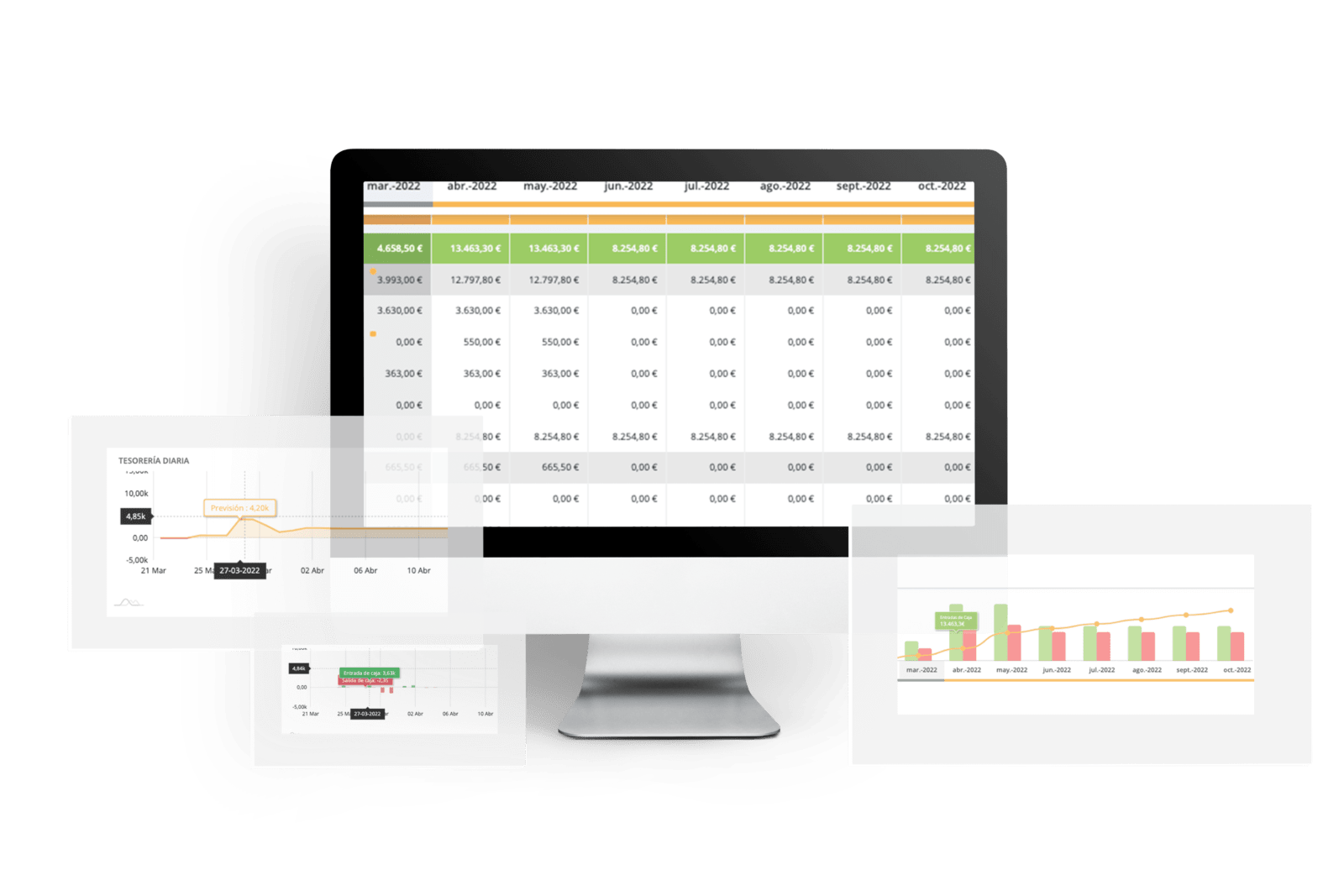One of the keys to having a good financial status in your company is, undoubtedly, cash management. That is to say, to know perfectly the state of our expenses and income and that this allows us to make justified decisions with concrete data. That’s why knowing how to make a cash flow plan in 5 steps.
It is also important to have a cash flow forecast because it will allow us to know the evolution of cash flow, to know how many months in advance we need to cover fixed expenses, to know when to carry out operations such as investments or borrowing and, finally, to know what our financing needs are.
For this reason, and due to its importance, creating a cash flow plan can be complex, since it has to be done in a rigorous manner in order to be able to visualize the balance for a specific month as well as the accumulated sum.
Here are 5 tips to make the treasury plan efficient and useful for your company’s decision making:
How to make a cash flow plan in 5 steps
1. KEEP YOUR DATA UP TO DATE
All treasury plans start from the common position at the beginning of the month. So, it is safest to base your cash flow plan on the annual balance sheet data, which provides the cash flow statement available so far.
2. SEGMENT CASH FLOW
Our objective is to be able to reflect future cash inflows and outflows. For this reason, and as we commented in our blog article
Learning how to calculate cash flow
It is best to classify them by cash flow considering the structure of the balance sheet: operating cash flow, investment cash flow, and financing cash flow.
If you want to know in depth the types of cash flows, we leave you the article of our blog.
What is cash flow and how is it calculated?
3. BE REALISTIC WITH PAYMENT TERMS
It is vital that the cash flow plan is as accurate as possible, so be realistic with the timing when planning your collections. Keep in mind that invoices are usually issued at the end of the month and that drafting the invoice and sending it takes time. And, therefore, to be received, recorded and accounted for by the customer, yet another one.
Therefore, you have to be prudent. Take into account late payments from customers and consider that you will pay your suppliers early .
4. VERIFIES SUPPLIER PAYMENT TERMS
Knowing the payment terms of the invoices issued by your suppliers will allow you to better plan future operations. Therefore, you need to understand whether the payments will be made in 3, 6 or 12 installments, or if the payment is to be paid in one lump sum. And above all: knowing when they will occur.
5. SIMULATES V.A.T. IMPACT.
Finally, you should know that depending on the structure of the company and the V.A.T. regime to which it is subject, it will be necessary to pay or charge V.A.T. (Value Added Tax).
If the company does not have liquidity yet, it may be eligible for a V.A.T. refund, but this refund can take a long time, from weeks to several months.
On the other hand, if the company invoices abroad, it is not subject to V.A.T., but must return a portion of its turnover. Something similar happens if the organization receives more V.A.T.: it will have to pay it back later.
If you have never created a treasury plan, it can be more challenging to gather the information and make forecasts that make sense. Therefore, the role of a CFO is to compile the data and look for assumptions for structuring payroll, loans or the order book.
Therefore, the role of the CFO can help you structure your cash flow monitoring and, as a result, mak
Orama helps you with the treasury plan of your business through the automatic reconciliation of movements. In addition, you can count on 12 months of forecasts to have everything under control.
Book your demo with one of our specialists and start controlling your treasury.





